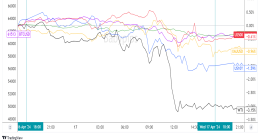
A shopper’s perception of choice should be the driving force behind a retailer’s assortment strategy.
September 6, 2019 5 min read
Opinions expressed by Entrepreneur contributors are their own.
Meeting consumer demands in grocery is a true balancing act. Retailers must offer an enjoyable in-store experience while accommodating consumers’ desire for click-and-collect options. They strive to be dependable for mainstay products, while releasing specialty items in response to new trends.
In response to “evolving consumer tastes,” Walmart announced plans to broaden its assortment of specialty foods, discussing the strategy in detail at this year’s Summer Fancy Food Show. With 90 percent of Americans living within 10 miles of a Walmart store, Walmart saw the opportunity to expose consumers to more innovative brands. The new hyper-local, store-level approach to assortment decisions brings new products to exact, targeted markets.
Without access to Walmart’s supply chain prowess, how can other retailers do the same? Is it possible to build strong-performing categories while consistently meeting consumer demand? The answer is “absolutely,” but it requires a close look at category performance.
Examine a category for unnecessary duplication
Opportunities on the shelf can be identified by adhering to the “Rule of 17,” which states that up to 17 percent of products in a given category are duplicative in nature. Where a retailer has too many similar products, mediocre sales growth and category performance follow. Instead of reducing the stock of one item to accommodate for the shelf space of a new one, retailers should remove duplicative products and products that don’t perform.
Effective identification of category duplication requires a precise understanding of the products each shopper considers valuable, and a determination of which products are safe to remove. Doing so allows for the introduction of specialty items where real opportunity in a category exists. Walmart’s example emphasizes that customers reject duplication — they want unique product selections with easy-to-discern differences.
Assess whether or not a new product is truly “specialty”
With the Rule of 17 in mind, grocers have the opportunity to broaden the product spectrum rather than add duplicative products that further crowd the category. To do so, they must understand the product attributes that qualify it as “specialty.”
A specialty food item is intrinsically different and unique from the products it stands beside. It will possess distinctive characteristics or flavor profiles that appeal to customers focused on that specific quality. The item could have a unique purpose or unique ingredients, or it may address dietary needs that otherwise remove a traditional product from someone’s consideration set. For example, the introduction of cauliflower pizza crust in the freezer section will likely delight gluten-intolerant or health-conscious shoppers.
Related: Online Grocery Recommendations Are Lacking. 3 Young Entrepreneurs Are Trying to Change That.
A specialty food item is not just a different container, different size, or a different manufacturer of the same product. Consider 100% not-from-concentrate apple juice, or extra virgin olive oil. Those items, by nature, are what they are — adding an item with new packaging or from a new brand could confuse or overwhelm shoppers, and it will reinforce the duplication retailers should be working to eliminate.
Make precise, location-specific assortment decisions
To successfully introduce specialty items and craft store-specific assortments, retailers must understand consumer preferences at a very granular, local level. Walmart’s strategy portrays an open approach to assortment, influencing as few as 10 stores and as many as 4,000.
To correctly deliver store-specific product introductions, retailers must understand customer behaviors and decision trees at each individual location. This level of granularity is only achievable by leveraging the emerging technologies of artificial intelligence and machine learning algorithms to process massive amounts of data from multiple sources.
Re-calibrate if a newly introduced product doesn’t perform
As retailers introduce specialty products, organizations should closely observe consumer behavior to see if the new item resonates. To do so, a quick response mechanism should be set and executed, meaning new markets have a set window of opportunity to generate a certain amount of sales or drive a certain amount of revenue growth, or else the product is removed from the assortment.
Retailers must have the right technology that includes this “learning” capability to drive incremental efficiency gains while protecting margins.
Related: Here’s Why Online Local Grocery is the Next Big Thing
The Rule of 17 — removing duplicative products to improve category performance — should assist retailers in identifying opportunities for new item introductions. If 17 percent of duplication in a category is removed, the retailer opens the shelf for up to 17 percent new SKUs that can offer differentiated value to existing and new customers. By evaluating both sales and customer loyalty data in the process for course correction, every retailer will be in a position to routinely provide exactly the products a customer is shopping for.
This article is from Entrepreneur.com









